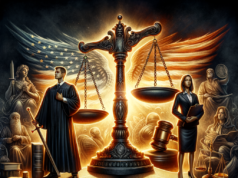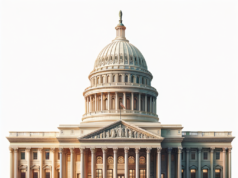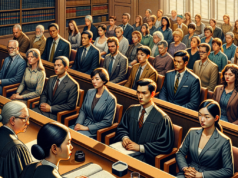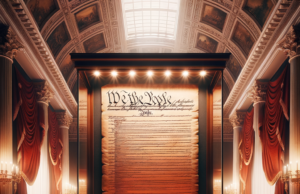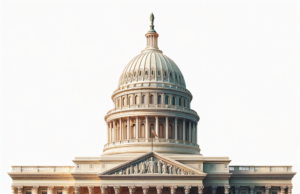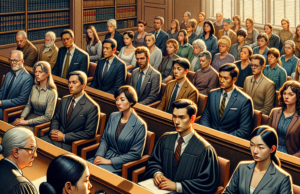Contents
- 1 Understanding the Gun Reform Debate: Key Issues and Stakeholders Involved
- 2 Historical Context: The Evolution of Gun Laws in the United States
- 3 Public Opinion: Surveying the Nation’s Views on Gun Control and Rights
- 4 Legislative Efforts: Recent Proposals and Their Implications for Gun Reform
- 5 The Impact of Gun Violence: Analyzing Statistics and Real-Life Consequences
- 6 Bridging the Divide: Possible Solutions for a Compromise on Gun Legislation
 The gun reform debate in the United States has become one of the most polarizing issues of our time, pitting advocates for stricter gun control against defenders of Second Amendment rights. As mass shootings and gun-related violence continue to plague communities, the call for reform grows louder. However, the nation remains deeply divided on how to balance safety and individual rights. This article delves into the key issues, historical context, public opinion, legislative efforts, the impact of gun violence, and potential pathways to compromise.
The gun reform debate in the United States has become one of the most polarizing issues of our time, pitting advocates for stricter gun control against defenders of Second Amendment rights. As mass shootings and gun-related violence continue to plague communities, the call for reform grows louder. However, the nation remains deeply divided on how to balance safety and individual rights. This article delves into the key issues, historical context, public opinion, legislative efforts, the impact of gun violence, and potential pathways to compromise.
Understanding the Gun Reform Debate: Key Issues and Stakeholders Involved
At the heart of the gun reform debate are several key issues, including the interpretation of the Second Amendment, the effectiveness of existing gun laws, and the role of mental health in gun violence. Stakeholders in this debate range from gun rights organizations like the National Rifle Association (NRA) to gun control advocacy groups such as Everytown for Gun Safety and Moms Demand Action. Lawmakers, law enforcement agencies, and the general public also play crucial roles in shaping the discourse. Proponents of gun control argue that stricter regulations can reduce gun violence and save lives, while opponents contend that such measures infringe upon individual freedoms and do little to deter criminals.
Historical Context: The Evolution of Gun Laws in the United States
The history of gun laws in the United States is complex and multifaceted, reflecting the nation’s evolving views on firearms and personal liberty. The Second Amendment, ratified in 1791, has been interpreted in various ways over the centuries, leading to a patchwork of state and federal regulations. Significant milestones include the Gun Control Act of 1968, which aimed to regulate interstate firearms commerce, and the Brady Handgun Violence Prevention Act of 1993, which instituted background checks for gun purchases. More recently, the Supreme Court’s decisions in cases like District of Columbia v. Heller (2008) and McDonald v. City of Chicago (2010) have reinforced the individual right to bear arms, complicating the legislative landscape for gun reform advocates.
Public Opinion: Surveying the Nation’s Views on Gun Control and Rights
Public opinion on gun control remains deeply divided along political, geographic, and demographic lines. Recent surveys indicate that while a majority of Americans support universal background checks and restrictions on assault weapons, there is significant resistance to more comprehensive measures such as gun buyback programs or bans on handguns. Political affiliation plays a critical role, with Democrats generally favoring stricter regulations and Republicans advocating for gun rights. Additionally, regional differences are evident, with urban areas often supporting more stringent laws compared to rural communities, where gun ownership is more culturally ingrained.
Legislative Efforts: Recent Proposals and Their Implications for Gun Reform
In response to rising gun violence, lawmakers at both the state and federal levels have introduced various proposals aimed at reforming gun laws. Recent legislative efforts include the Bipartisan Safer Communities Act, which enhances background checks for buyers under 21 and provides funding for mental health services and school safety. However, these measures have faced significant opposition, and many proposed bills, such as those seeking to ban assault weapons or implement mandatory waiting periods, have stalled in Congress. The ongoing gridlock reflects the broader ideological divide and raises questions about the feasibility of meaningful reform in the current political climate.
The Impact of Gun Violence: Analyzing Statistics and Real-Life Consequences
Gun violence in the United States has reached alarming levels, with tens of thousands of deaths and injuries reported annually. According to the Centers for Disease Control and Prevention (CDC), firearms were involved in over 48,000 deaths in 2021 alone, with a significant proportion attributed to suicides. The impact of gun violence extends beyond statistics, affecting families, communities, and the fabric of society. Survivors of gun violence often face long-term physical and psychological consequences, while communities grappling with the aftermath of mass shootings experience profound grief and trauma. These realities underscore the urgent need for effective solutions to address the crisis.
Bridging the Divide: Possible Solutions for a Compromise on Gun Legislation
Finding common ground in the gun reform debate requires a multifaceted approach that respects both safety concerns and individual rights. Possible solutions may include enhancing background checks while preserving the rights of responsible gun owners, implementing red flag laws that allow for temporary removal of firearms from individuals deemed a risk to themselves or others, and investing in community-based violence prevention programs. Engaging in open dialogue and fostering collaboration between stakeholders can help bridge the divide, paving the way for legislation that addresses the complexities of gun violence while honoring the Second Amendment.
The gun reform debate in the United States is emblematic of a broader struggle to reconcile safety and rights in a diverse society. As the nation grapples with the consequences of gun violence, the need for thoughtful, effective solutions has never been more pressing. By understanding the key issues, historical context, and public sentiment, stakeholders can work towards a more nuanced approach that seeks to protect both individual freedoms and the collective safety of communities. The path forward may be fraught with challenges, but the pursuit of compromise remains essential in addressing one of the most critical issues facing the nation today.



